I have had sporadic luck through the years photographing lightning locally in the Los Angeles area. The best displays are typically at night, from elevated thunderstorms. My best night with the camera might have been at LAX, during a weather observing shift, nine years ago. These spectacular events might occur only once or twice every few years, though. And when they do, it is often after midnight and I sleep through them. I have made numerous 30-minute drives from home to Malibu in the hopes of shooting lightning from a hillside above the ocean, but with no luck. Now that I work at San Nicolas Island half of the time, I have been hoping for a chance to shoot lightning over the coastal waters from there. There are nice vantage points of the ocean on the north side of the island, near Nicktown. I have my tripod stored in the room, ready to go!
And so on Sunday, September 10, there was a chance of showers over the coastal waters (Santa Monica Bay and vicinity) for the evening hours especially. A cut-off upper-level low, west of Los Angeles, would provide the lift necessary on the mid-level moisture. The atmosphere was unstable enough above the shallow (and stable) marine layer to promote storms. A weak storm above the island mid-afternoon rumbled once, and this was a harbinger of bigger and better storms later! By 5 or 6 p.m., the radar showed development near San Clemente Island, to the southeast. The storms would move this way and through the coastal waters between Catalina and Santa Cruz Island. Best of all, the timing was great with regard to photography: near sunset and into the evening.
The images below are from lightningmaps.org, and these show the detected lightning strikes mid-evening, around 8 p.m. to 9 p.m. PDT. And, the maps serve as a nice reference to see where San Nicolas Island is with regard to the other islands and the Southern California coastline.
I grabbed my camera bag and frantically looked for a good place to shoot…somewhere on the edge of Nicktown. The best spot would be on the nearby bluff or hilltop with a great view over the ocean from the northwest to the northeast. But, the storms were not towards that direction yet. I decided to set up a quarter mile or so to the south of Nicktown, with a decent view towards the airport to the east. There was quite a bit of lightning visible in that direction already. Oh yes, I had to get around on my rental bike, as I have no automobile here! The best spot starting out would no doubt have been at the top of the island to the south, but it would have taken too long to bike up there…and I don’t know if I would have liked being so exposed up there with the storm coming in.
It was close to sunset, and the light was nice but there were no deep colors to the east and southeast. I started to shoot that way with the 24-70mm lens, but there was still too much light for long exposures. Lightning was frequent enough to try one-second exposures over and over again, but I think at this point I was just trying to catch a “repeater bolt” by clicking the remote after seeing the first flash. And this worked out nicely twice, as I caught two long CGs behind the airport. These may have hit the island (the eastern shore of the island was only four miles away from my location).
I was quite pleased with these lucky shots, especially since it looked like they were in focus! The third one above is a crop of the second one, and the island airport buildings are clearly visible.
There was plenty of lightning to shoot, but now it was raining a little. That meant that I was especially vulnerable to lightning. As you can see, there is not much around for lightning to hit except for guys standing next to a metal tripod and a bicycle. I tried a few more shots, just clicking away to try to get super lucky with a bolt during a two-second exposure, but then Mother Nature threw a close CG behind me. The thunder blast came within a half second. It was time to head back down the road into town! I prayed that there would be no more lightning for those two minutes.
I got beneath a little doorway awning at the medical annex building. I tried to get some shots from here, but the storm was overhead and the lightning was now to my NW and N. I needed to get up on my little high-point bluff with the view of the ocean, but it was still too wet and too dangerous for that. Eventually it was dry enough to make my way up there, and I spent most of the next few hours shooting the storms and the lightning over the coastal waters. Rain and lightning chased me off of my high point a few times, to a nearby building awning, but it was dry for the most part after 9 p.m. With a persistent breeze from the northwest, I was drying off the lens numerous times early on.
The weather gods did not disappoint, and I was getting the shots that I have been yearning for! Or, I was getting the shots for which I have been yearning. These types of storms are “elevated,” which means that they are not incorporating any air from the boundary layer. The boundary layer around the island is the “marine layer,” and this evening it was quite shallow, perhaps 800 feet in thickness above the ocean. The elevated storms had high cloud bases, perhaps near ten thousand feet above sea level. Much to the delight of photographers, the lightning from these high-based storms is quite vivid. Some lightning was buried in heavy rain, but there was plenty out of the rain-free cloud bases, too.
The CGs above (CG stands for cloud-to-ground lightning) were towards my southeast to northeast. The first one shows lights near the airport on the left, and the red lights of the tall windmill machines on the hilltop on the right). The remainder show part of Nicktown, looking towards Santa Barbara Island. Lightning was occurring every 5-10 seconds or so, and it was easy to catch with the camera now! I had a front-row seat as the best activity shifted to my north and north-northwest (see images below). The coastline on the northwest side of San Nicolas Island is visible in many of these. The illuminated area is the “environmental” building, and the utility poles follow the road to the beach.
Fortunately the low clouds in the shallow marine layer did not sweep over San Nicolas Island during this event, and the patchy stratus over the ocean added some interesting dimensions to the photography.
The great lightning activity grew more distant, and I switched primarily to wide-angle mode. Stars are visible in some of the images below.

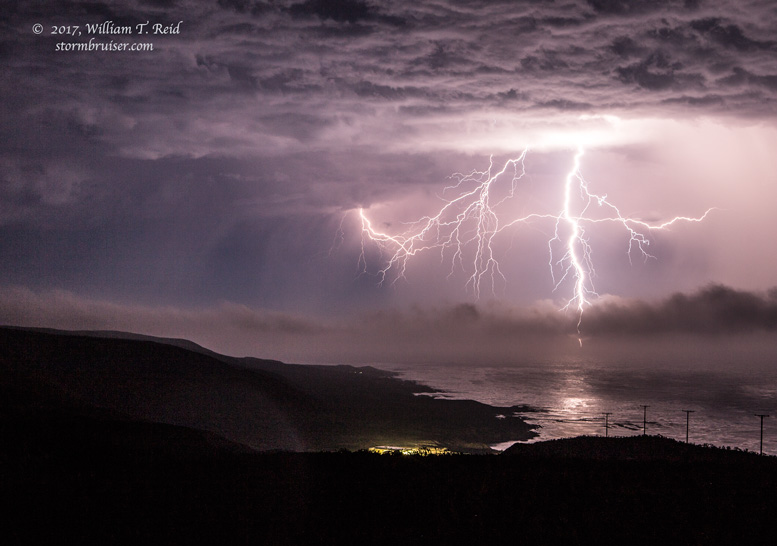
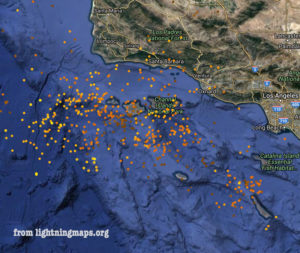
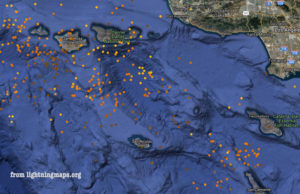
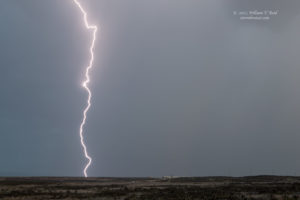
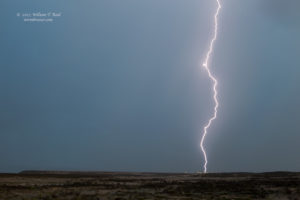

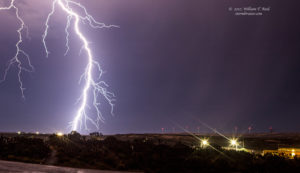

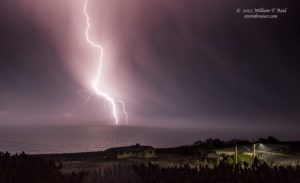
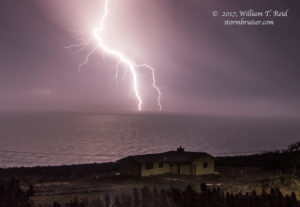
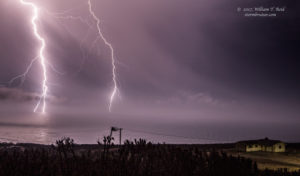
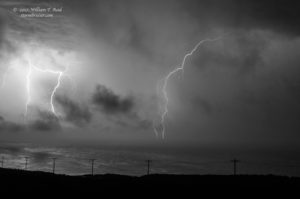
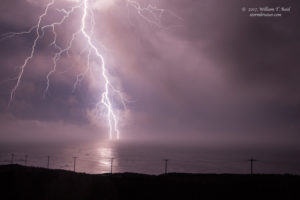
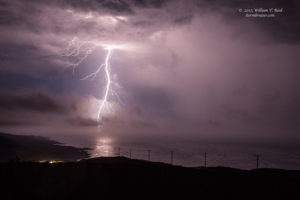

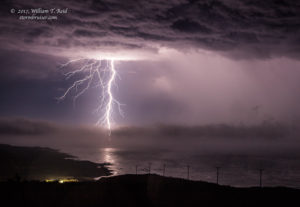
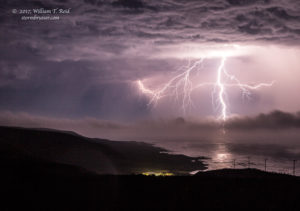



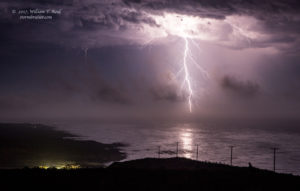
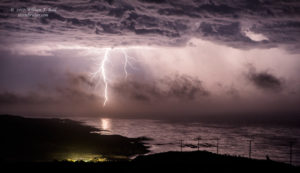
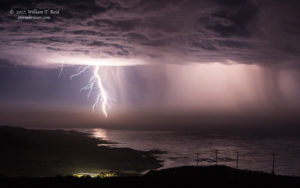
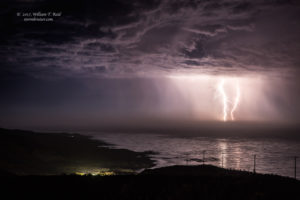
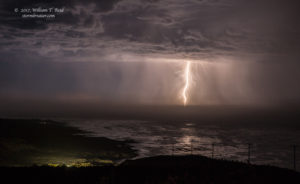
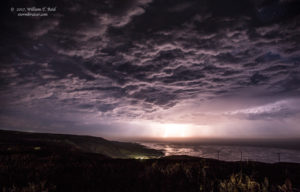

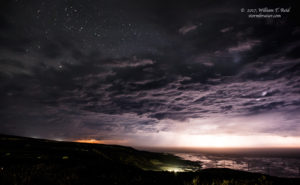
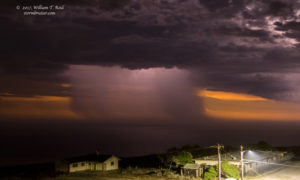

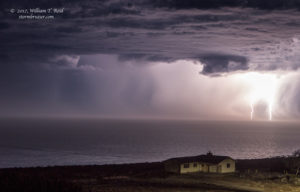

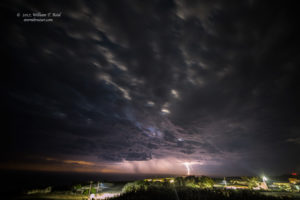
Leave a Reply
You must be logged in to post a comment.